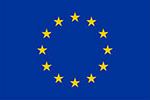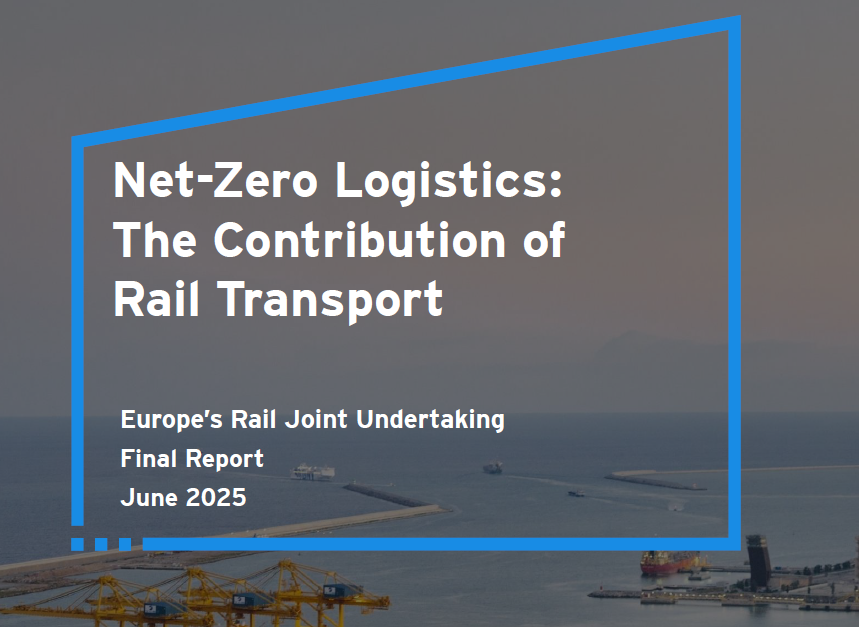Among the nine major Flagship Projects (FPs) funded by Europe’s Rail Joint Undertaking (EU-Rail), FP2-R2DATO plays a...
Deliverables published by the project
D19.1 Specification Report of Enablers 18-27
This document, deliverable D19.1, belongs to Europe’s Rail FP1 MOTIONAL specification phase from Work Package (WP) 19. FP1 MOTIONAL project focuses on improving network management planning and control, as well as rail mobility management in a multimodal environment in Europe. Research and innovation activities are broken down into several areas grouping the TEs (Technical Enablers) identified in the MAWP (Multi Annual Working Plan). The present document addresses features associated with WS (Work Stream) 1.3 “Integration of rail traffic with door-to-door mobility”, namely TEs 18 to 27. Within MOTIONAL, the team in charge of this area is known as SG3 (Subgroup 3).
D19.1 (due at M12) is elaborated during the first phase of the project with the objective to provide the required inputs for the next phases, namely development and demonstration.
This document starts with a review of the TEs with a dedicated highlight on associated past innovation projects, the objective being to establish a clear baseline for the specification work. It then proposes an analysis of the system architecture inspired by AF (Architecture Framework) guidelines. This analysis starts with a view of the targeted operational objectives of the system in the form of a set of use cases associated with TEs. It moves next to a general description of how the system should implement these operational objectives through the elaboration of system functional analysis consisting in the definition of high-level capabilities and requirements. The following step, logical architecture, aims at identifying the logical components of the system, their interactions in the perspective of the implementation of use cases and the interfaces and standards in scope when applicable. D19.1 ends with the transition towards the next phases of the project with the definition of the planned work for development and demonstration phases.
D26.1 Use Case Collection Process
The usage of latest digital technologies (e.g. federated data spaces, CDM, digital twins, etc.) are key enablers to drive the railway industry forward and are mainly responsible for almost any optimization within the last years. That is why FP1-MOTIONAL Work Stream 2 (Work packages 26-31) is focused on the investigation of new technologies as well as the adoption of existing ones that are available on the market to enable these for the railway community; so, called: “technical enablers”.
Since, this approach would remain ineffective until these technical enablers are not used in combination with a use case, WP26 is obliged to technically enable as many use cases as possible, that evolve from the other flagship projects. However, only those use cases shall be cooperated with, where’s use case owner are requesting for that sort of support. The usage of WP26 technical enablers is not mandatory to any use case owner.
Main goal of this first task within WP26 (26.1) was to come to a common understanding of how the required use cases that evolve from the other flagship projects shall be identified and interacted with. This interaction shall include the identification of use cases as mentioned above, that envisage the usage of at least one technical enabler technology developed in workstream 2 FP1-MOTIONAL. Furthermore, it shall set relevant stakeholders (namely use case owners and owners of technical enablers) into contact with each other to join forces within an iterative process, where the use cases and the technical enablers are combined step by step to research on it’s synergies and effectiveness (Task 26.2). Finally, the outcome of this investigation shall be to come to a consensus of how the set of use cases shall be collected and documented (Task 26.3).
For this purpose, the WP26 working group developed a process within task 26.1 on basis of the “swim lane” methodology that maps all stakeholders and their respective tasks within the use case collection process execution. The process description covers the identification of relevant use cases, the collection of them and – if applicable – their adoption by the System Pillar towards standardization.
This process as well as the common understanding are considered the main outcome of this task and are described in this document.
D27.1 Data model and format for a harmonised EU planning of railway assests, starting from CCS+
The present document examines how a harmonized set of data can be used to realize the idea of SERA and a Single European Railway Traffic Management system. This vision is based on the concept that a common data model can be used in the supply chain, regardless of the specific domain. The System Pillar CCS-TMS Data Model is a first instance of a common model fully dedicated to CCS-TMS engineering and operations. The potential utilization of such data in other domains besides signalling, such as diagnostics, maintenance, and so forth, is analysed through the presentation of a set of business cases. The business cases allow us to identify key data requirements for the WP27 digital planning toolbox and other applications. The content of this deliverable (D27.1) will be used as input for the task 27.2 to guide the extraction of selected objects from the data sources identified. The extracted objects can be used by both the toolbox and other railway applications as a result of FP1 and other FP interactions and collaborations.
D31.1 Federated data space “Sandbox Environment” description
As stated in its Master Plan, the Europe’s Rail Joint Undertaking (ERJU) public-private partnership “aims to accelerate research and development in innovative technologies and operational solutions supporting the fulfilment of European Union policies and objectives relevant for the railway sector and supporting the competitiveness of the rail sector and the European rail supply industry”; [it] “will foster a close cooperation and ensure coordination with related European, national and international research, innovation deployment and investment activities in the rail sector and beyond, in particular under Horizon Europe, Connecting Europe Facility, and the Digital Europe Programme”.
The creation of a Rail Data Space (RDS) as one of the implementation deliverables of the ERJU is a concrete instance of cooperation and coordination with the Digital Europe Program: its ultimate goal is to align data sharing and communication in the Rail Sector to the European Data Strategy, making the Rail Sector both a contributor and a beneficiary of the “single market for data” for a “data-driven” European society:
- Leveraging the resources and know-how provided by the Dataspace Support Center, funded by the Digital Europe Programme,
- Ensuring at inception and by design compliance with the European legislative acts that complement the establishment of European data spaces (Data Actions)
- Ensuring at inception and by design the ability to deploy the Rail Data Space on Next Generation Cloud infrastructure (Cloud Actions)
D32.1 Project dissemination and communication plan
FP1 – MOTIONAL paves the way for implementation the future European Capacity Planning and Traffic Management System, built on digitalisation, automation, and connectivity, supported by Europe’s rail technology initiative. The FP1 – MOTIONAL project provides the rail industry players with digital access to automated and harmonised solutions for a common European capacity planning and traffic control railway system with shared data, with the goal to make rail the preferred mode of transport. Improving the planning and operational management of services and offers is of paramount importance to meet the European ambitious target of making rail the preferred mode of transport in the future. The future European railway system will be interoperable, resilient and able to adapt its capacity and integrate all involved services including last mile operations by exploiting the opportunities provided by digitalisation. The development of the future European Traffic Management is key for achieving the foreseen Single European Railway Area (SERA). To achieve these goals, the project activities are carried out in two large Workstreams:
1) Workstream 1 (WS1) covers three main focus areas; planning, operational activities (including managing future interactively coupled timetable planning) and finally operational traffic management systems, which also includes integration activities for door-to-door mobility. 2)
2) Workstream 2 (WS2) refers to the delivery of a set of digital enablers for all European rail destinations, i.e., crosscutting, to support the development of destination-specific digitalisation solutions.
The communication and dissemination plan must be used as guidance in the communicative work and provide support for prioritising the right message and activities and ensuring coherent communication. The plan is based on EU-Rail’s communication policy and communication strategy and on the common goal of strengthening the overall EU-Rail programme [2]. This is done by highlighting FP1 – MOTIONAL as an important contribution to the whole. From this, the goal is to disseminate and communicate the project developments and results to share the successes with the public and other stakeholders. The aim of the deliverable is to provide a transparent dissemination and communication plan for the FP1 – MOTIONAL project and to describe the measures and approaches that will be used to facilitate the wide-spread distribution of information and knowledge of the results created by the project. The dissemination of FP1 – MOTIONAL is essential throughout the project duration and needs to be carried out with the active cooperation of all consortium members. Furthermore, it is expected that the dissemination plan, through an effective dissemination of results on selected channels, can be used as guidance for future work. The communication and dissemination plan is a document that will be updated throughout the project lifecycle to reflect progress and outcome. This document introduces materials and documents to communicate and disseminate FP1 – MOTIONAL to railway stakeholders, the scientific community and the general public.
Important findings and useful results will be widened with tailor-made messages, through the most appropriate channels and frequency to railway stakeholders, the scientific community and the general public by the mean above. Knowledge can then be used to “Go Research, Go External, Go Internal” by their interest and needs. The result can be used by research organisations, by other actors in the rail system community or by the partners within FP1 – MOTIONAL. The dissemination plan will not include the verification of content for which WP leaders are responsible. WP Leaders are responsible for ensuring that the inputs to the Dissemination Work Package reflect the actual output and progress within the respective Work Packages.
D32.2 Exploitation Strategy
This document outlines the FP1-MOTIONAL project’s exploitation approach and strategy to ensure the best use of the project’s results, in addition to the communication and dissemination activities which are described in a separate deliverable, D32.1 – Communications and Dissemination Plan. The delivery of FP1-MOTIONAL project is structured in two Workstreams (WS) as follows:
1. WS1 – Rail Services Planning and Operations – with an aim to deliver developments for a future European Traffic Management, to pave the way towards a Single European Rail Area, and make rail the backbone of a multimodal transport system for passengers and freight. This WS1 has three major focus areas: WS1.1 – Planning, WS1.2 – Operations, and 1.3- Integration activities to support a door-to-door mobility.
2. WS2 – Digital Enablers for all Europe’s Rail Destinations (i.e. Flagship Areas) – with an aim to deliver solutions to support the digital transformation of the rail system as a whole. Each of the workstreams mentioned above has specific approaches to exploitation due to differences in scope and stakeholders. In general, WS2 places a stronger emphasis on internal exploitation, whereas WS1 is focused more on external exploitation.
The scope of this exploitation plan excludes the verification of the project results content, which is attributed to the Work Package (WP) leaders, who are also responsible for ensuring that the inputs into the exploitation activities reflect the actual output and progress within the respective Work Packages.

















